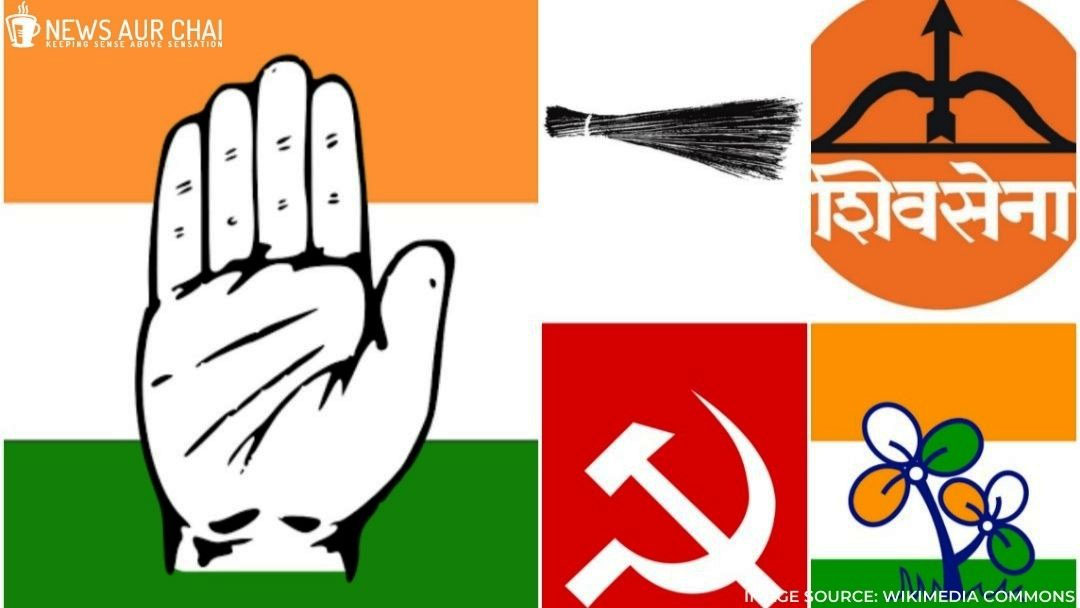
India has entered the next phase of its unique lockdown strategy with the Central and State Government doing their best to contain the deadly COVID-19 virus. As on Wednesday, India’s tally stands at 15,474 active cases with 640 deaths. Amid the crisis, all parties, small or big, is trying to ease the difficulty of people either by announcing relief package to the poor or relaxing lockdown for their native stranded in other states. Here is how other parties are playing a role during the pandemic that has infected over 25 lakh people worldwide.
Major Opposition Party Congress:
A crisis provides a good opportunity for the bipartisanship and Congress managed to identify it at an early stage of the outbreak in the country. The Congress president Sonia Gandhi wrote a letter to Prime Minister Narendra Modi mentioning several recommendations that the country can undertake to combat the menace of the coronavirus.
Congress, in fact, is voicing its opinions, as well as, constructively criticizing the Modi Government’s shortcomings and decisions. Congress’ is appearing to be trying to deal with a serious problem instead of playing political games or bringing down the BJP Government.
I will keep repeating this.
The #coronavirus is a huge problem. Ignoring the problem is a non solution. The Indian economy will be destroyed if strong action is not taken. The government is in a stupor. https://t.co/SuEvqMFbQd
— Rahul Gandhi (@RahulGandhi) March 13, 2020
Rahul Gandhi had warned about COVID-19 in his tweet of February 12, where he said, “The Coronavirus is an extremely serious threat to our people and our economy. My sense is the Government is not taking this threat seriously. Timely action is critical.” He had also tagged an article of the Harvard Gazette, dated February 7, predicting about the probable widespread outbreak of the virus, in his tweet.
Gandhi offered an excellent outlook to battle COVID-19 in the best possible way according to him, in a media interaction. He recognized health and economy to be the most critical factors to be dealt with. For the health sector, Gandhi made it clear that the current lockdown is no permanent solution but a “pause button” against coronavirus. He reiterated his demand to increase testing and urged the Government to stop chasing the virus by testing symptomatic patients and focus on pre-empting the virus by random sampling. He warned that the virus might relapse once lockdown is lifted if proper use of architecture and resources are not done strategically.
In case of economy, Gandhi believes that the financially backward people would be the worst hit and therefore the Government needs to develop a “safety net” along with higher amounts of “cash transfer and a minimum financial net” for the underprivileged, proper distribution of food to the marginalized, and a “defensive package” for smaller organizations so that they can provide job security to the massive population of migrant workers who are on the verge of losing their livelihood.
Seemingly, the Modi government has implemented many of Rahul Gandhi’s suggestions to aid the marginalized to deal with the imminent economic crisis by announcing the Rs.1.7 lakh crore Pradhan Mantri Garib Kalyan Yojana.
Congress President Sonia Gandhi addressed a letter to the Prime Minister on April 7, putting forward five austerity measures to divert the required funds towards the corona crisis. It was mentioned there that the Government should impose a two-year ban on media advertisements, raising discontent from the media houses.
Congress had a rich experience of handling the humanitarian crisis with a broader approach and motivation catastrophes pragmatically. It has actively responded to the crisis by streamlining communication network across India and formed task force committees to help the citizens.
All India Congress Committee (AICC) General Secretary Priyanka Gandhi coordinated with chief ministers and other stakeholders to develop a competent mechanism to facilitate migrant workers hailing from Uttar Pradesh who are stuck in various parts of the country.
Arvind Kejriwal Urges People to Stay at Home:
The Delhi Chief Minister believes that staying at home would the best way to show patriotism at this juncture of time. He supports the BJP Government’s lockdown decision and recognizes it to be the ‘mantra’ to fight COVID-19.
As concerns were raised over migrant worker exodus triggered after the 21-day lockdown, Kejriwal assured that food and lodging arrangements would be provided in schools and stadiums had also been vacated to serve the purpose.
Kejriwal says the Delhi Government is providing lunch and dinner to about 4 lakh people each day. He mentioned about his appeal to employers to pay full salaries to their employees and labourers, his request to landlords not to force tenants in paying off rents currently, and stated that the state Government would help the poor to pay rents if needed. He also emphasized to maintain solidarity and restrain from politicizing the crisis.
Uddhav Thackeray’s Take:
Shiv Sena, sharing power with Congress and NCP in Maharashtra, praised Rahul Gandhi on Saturday for taking a positive stand as a responsible opposition party to avert the crisis. Shiv Sena appreciated Rahul’s view on public interest and political maturity when Rahul said that though he has differences with Modi, it is not a time to engage in a political quarrel, but to deal with the situation collectively.
Non-NDA Chief Ministers’ Part:
Punjab’s Amarinder Singh led Punjab Pradesh Congress Committee party has gained acknowledgement for making his police force implement lockdown rules with sensitivity.
Rajasthan’s Ashok Gehlot has managed to raise considerable alertness for restraining community transmission of Coronavirus in Bhilwara. Jharkhand’s Hemant Soren is playing a significant role in preparing the state to combat a potential outbreak of community transmission, and making the lockdown bearable for the poor.
West Bengal’s Mamata Banerjee is seen actively spreading awareness among the masses, forming a state fund to accept donations to help the victims, urging the people and the police to maintain strict quarantine rules.
Kerala’s communist part led by Pinarayi Vijayan has also is playing a pioneering role to fight against corona by announcing a comprehensive package of Rs.20,000 crore before any other state.
Though the opposition parties are taking positive stands, it is somewhat challenging to limit the unprecedented situation when movement is restricted.





